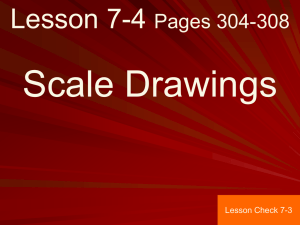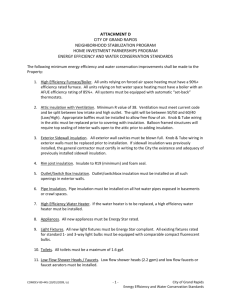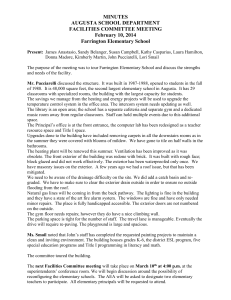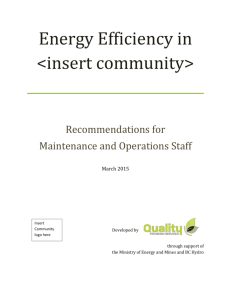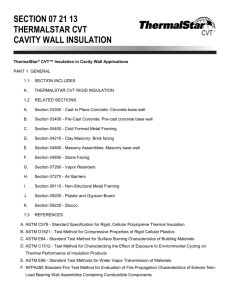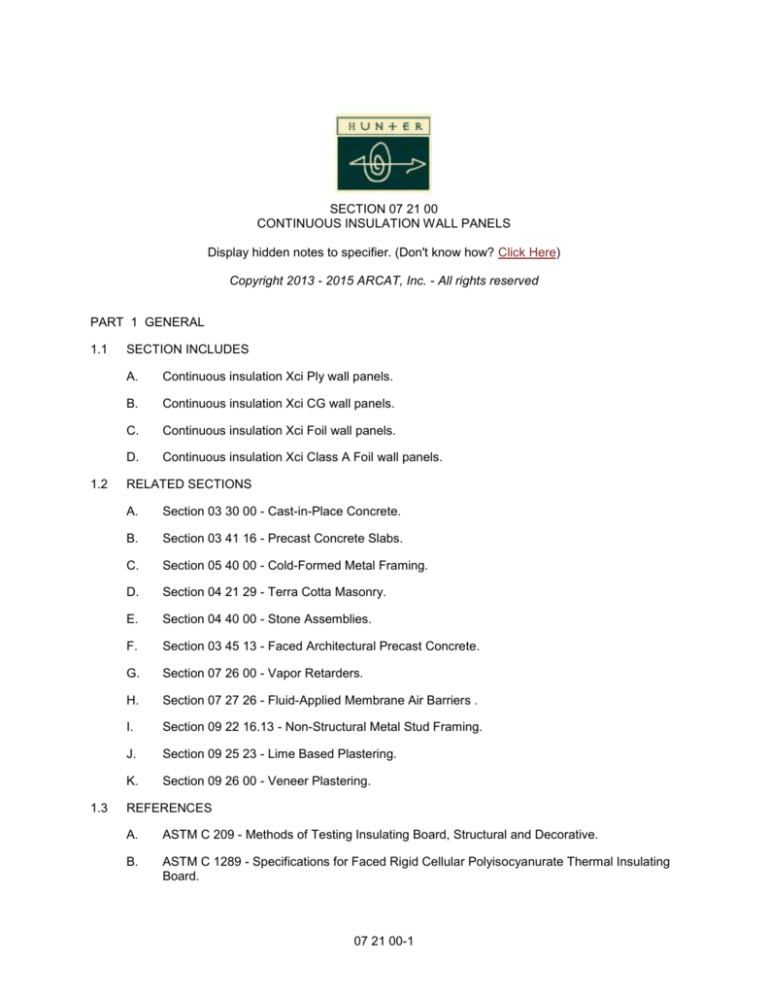
SECTION 07 21 00
CONTINUOUS INSULATION WALL PANELS
Display hidden notes to specifier. (Don't know how? Click Here)
Copyright 2013 - 2015 ARCAT, Inc. - All rights reserved
PART 1 GENERAL
1.1
1.2
1.3
SECTION INCLUDES
A.
Continuous insulation Xci Ply wall panels.
B.
Continuous insulation Xci CG wall panels.
C.
Continuous insulation Xci Foil wall panels.
D.
Continuous insulation Xci Class A Foil wall panels.
RELATED SECTIONS
A.
Section 03 30 00 - Cast-in-Place Concrete.
B.
Section 03 41 16 - Precast Concrete Slabs.
C.
Section 05 40 00 - Cold-Formed Metal Framing.
D.
Section 04 21 29 - Terra Cotta Masonry.
E.
Section 04 40 00 - Stone Assemblies.
F.
Section 03 45 13 - Faced Architectural Precast Concrete.
G.
Section 07 26 00 - Vapor Retarders.
H.
Section 07 27 26 - Fluid-Applied Membrane Air Barriers .
I.
Section 09 22 16.13 - Non-Structural Metal Stud Framing.
J.
Section 09 25 23 - Lime Based Plastering.
K.
Section 09 26 00 - Veneer Plastering.
REFERENCES
A.
ASTM C 209 - Methods of Testing Insulating Board, Structural and Decorative.
B.
ASTM C 1289 - Specifications for Faced Rigid Cellular Polyisocyanurate Thermal Insulating
Board.
07 21 00-1
1.4
C.
ASTM D 1621 - Test Methods for Compressive Properties of Rigid Cellular Plastics.
D.
ASTM D 2126 - Test Method for Response of Rigid Cellular Plastics to Thermal and Humid
Aging.
E.
ASTM D 3273 - Standard Test Method for Resistance to Growth of Mold on the Surface of
Interior Coatings in an Environmental Chamber.
F.
ASTM E 84 - Standard Test Method for Surface Burning Characteristics of Building
Materials.
G.
ASTM E 96 - Test Method for Water Vapor Transmission of Materials.
H.
CAN/ULC S770 - Standard Test Method for Determination of Long Term Thermal
Resistance of Closed Cell Plastic Thermal Insulating.
I.
NFPA 285 - Standard Fire Test Method For Evaluation Of Fire Propagation Characteristics
Of Exterior Non-Load-Bearing Wall Assemblies Containing Combustible Components.
DESIGN REQUIREMENTS
A.
Perform work in accordance with all federal, state and local codes.
B.
Continuous Insulation: Hunter Xci products meet the continuous insulation standards of
ASHRAE 90.1-2010 and IECC 2012 for commercial exterior wall applications and IBC
Building Code Chapter 26. Products have been NFPA 285 tested.
C.
Physical properties Xci Ply and Xci CG (Foam Core):
1.
Compressive Strength: ASTM D 1621; Grade 2, 20 psi (138 kPa) minimum or Grade
3, 25 psi (172 kPa).
2.
Dimensional Stability: ASTM D 2126, 2 percent linear change (7 days).
3.
Moisture Vapor Permeance: ASTM E 96, less than 1 perm (57.5ng/(Pasm2)).
4.
Water Absorption: ASTM C 209, less than 0.1 percent by volume.
5.
Service Temperature: Minus 100 degrees to 250 degrees F (Minus 73 degrees C to
122 degrees C).
6.
Resistance to Mold: ASTM D 3273 Passed (10).
D.
Physical properties Xci Foil (Foam Core):
1.
Compressive Strength: ASTM D 1621; Type I; Grade 1. 16 psi (110 kPa) minimum;
Grade 2, 20 psi (138 kPa) minimum and Grade 3, 25 psi (172 kPa).
2.
Dimensional Stability: ASTM D 2126, 2 percent linear change (7 days).
3.
Moisture Vapor Permeance: ASTM E 96, less than 0.05 perm (2.875ng/(Pasm2)).
4.
Water Absorption: ASTM C 209, less than 0.05 percent by volume.
5.
Service Temperature: Minus 100 degrees to 250 degrees F (Minus 73 degrees C to
122 degrees C).
E.
Physical properties Xci Class A Foil (Foam Core):
1.
Flame Spread Index: ASTM E 84, less than 25.
2.
Smoke Developed: ASTM E 84, less than 450.
3.
Compressive Strength: ASTM D 1621; Type II; Class 1; Grade 2 - 20 psi (138 kPa)
minimum; and Grade 3 - 25 psi (172 kPa).
4.
Dimensional Stability: ASTM D 2126, 2 percent linear change (7 days).
5.
Moisture Vapor Permeance: ASTM E 96, less than 0.04 perm (2.875ng/(Pasm2)).
6.
Water Absorption: ASTM C 209, less than 0.05 percent by volume.
7.
Service Temperature: Minus 100 degrees to 250 degrees F (Minus 73 degrees C to
122 degrees C).
F.
Fire Retardant Treated Plywood for Xci Ply: Flame spread rating of 25 or less when tested in
07 21 00-2
accordance with ASTM E 84.
1.5
1.6
1.7
SUBMITTALS
A.
Submit under provisions of Section 01 30 00 - Administrative Requirements.
B.
Product Data: Manufacturer's data sheets on wall panels and fasteners to be used,
including:
1.
Preparation instructions and recommendations.
2.
Storage and handling requirements and recommendations.
3.
Installation methods.
C.
LEED Submittals: Provide documentation of how the requirements of Credit will be met:
1.
List of proposed materials with recycled content. Indicate post-consumer recycled
content and pre-consumer recycled content for each product having recycled content.
2.
Product data and certification letter indicating percentages by weight of postconsumer and pre-consumer recycled content for products having recycled content.
3.
Provide FCS Chain of Custody number for OSB or plywood materials.
D.
Manufacturer's Certificate: Certify panels will conform to specified performance
requirements.
QUALITY ASSURANCE
A.
Manufacturer Qualifications: Manufacturer shall be a company that regularly manufactures
and assembles specified insulation in house with no outside fabrication operations.
B.
Pre-Installation Meeting: Convene minimum one week prior to commencing Work of this
section. Review installation procedures and coordination required with Related Work and
include the following:
1.
Participants: Authorized representatives of the Contractor, Architect, Installer, and
Manufacturer.
2.
Review wall assemblies for potential interference and conflicts and coordinate layout
and support provisions for interfacing work.
3.
Review continuous insulation wall panels installation methods and procedures related
to application, including manufacturer's installation guidelines.
4.
Review firestopping requirements and weather resistive membrane requirements and
placement locations.
5.
Review field quality control procedures.
DELIVERY, STORAGE, AND HANDLING
A.
1.8
1.9
Store products off the ground, in dry conditions, under cover and in manufacturer's
unopened packaging until ready for installation.
SEQUENCING
A.
Coordinate with the installation of vapor retarders and air seal materials specified is Section
07 26 00 - Vapor Retarders and Section 07 27 26 - Fluid-Applied Membrane Air Barriers .
B.
Ensure that products of this section are supplied to affected trades in time to prevent
interruption of construction progress.
PROJECT CONDITIONS
A.
Maintain environmental conditions (temperature, humidity, and ventilation) within limits
recommended by manufacturer for optimum results. Do not install products under
environmental conditions outside manufacturer's absolute limits.
07 21 00-3
PART 2 PRODUCTS
2.1
2.2
MANUFACTURERS
A.
Acceptable Manufacturer: Hunter Panels, which is located at: 15 Franklin Street; Portland,
ME 04101; Toll Free Tel: 888-746-1114; Tel: 207-761-5678; Fax: 877-775-1769;
Email:request info (info@hpanels.com); Web:www.hunterpanels.com
B.
Substitutions: Not permitted.
C.
Requests for substitutions will be considered in accordance with provisions of Section 01 60
00 - Product Requirements.
BOARD INSULATION
A.
Board Insulation Bonded to Plywood: Hunter Panels Xci Ply is a high thermal resistive rigid
insulation panel composed of a closed cell polyisocyanurate foam core bonded on one side
to a premium performance coated glass facer on one side and fire treated plywood on the
other.
1.
Type: ASTM C 1289, Type V:
a.
Grade 2 (20 psi).
b.
Grade 3 (25 psi).
2.
Fire Retardant Treated Plywood Thickness:
a.
5/8 inch.
b.
3/4 inch.
3.
Panel Size:
a.
4 feet by 8 feet (1220 mm by 2440 mm).
4.
Thickness / R Value: Long Term Thermal Resistance Values based on ASTM C 1289
and CAN/ULC S770 with a 15-year time weighted average.
a.
1.6 inches (41 mm) / R Value 6.6.
b.
2.1 inches (53 mm) / R Value 9.6.
c.
2.6 inches (66 mm) / R Value 12.7.
d.
3.1 inches (79 mm) / R Value 15.9.
e.
3.7 inches (94 mm) / R Value 19.1.
f.
Provide to the thickness indicated on the Drawings.
B.
Board Insulation Bonded to Premium Performance Coated Glass Facers: Hunter Panels Xci
CG is a high thermal resistive rigid insulation panel composed of a closed cell
polyisocyanurate foam core bonded on one side to a premium performance coated glass
facer on both sides.
1.
Type: ASTM C 1289, Type II, Class 2:
a.
Grade 2 (20 psi).
b.
Grade 3 (25 psi).
2.
Panel Size:
a.
4 feet by 8 feet (1220 mm by 2440 mm).
3.
Thickness / R Value: Long Term Thermal Resistance Values based on ASTM C 1289
and CAN/ULC S770 with a 15-year time weighted average.
a.
1.0 inches (25 mm) / R Value 6.0
b.
1.5 inches (38 mm) / R Value 9.0
c.
2.0 inches (51 mm) / R Value 12.1
d.
2.5 inches (64 mm) / R Value 15.3
e.
3.0 inches (76 mm) / R Value 18.5
f.
3.3 inches (84 mm) / R Value 20.4
g.
3.5 inches (89 mm) / R Value 21.7
h.
Provide to the thickness indicated on the Drawings.
C.
Board Insulation with Foil Facer: Hunter Panels Xci Foil complies with ASTM C 1289. Panels
07 21 00-4
are a high thermal resistive rigid insulation panel composed of a closed cell polyisocyanurate
foam core bonded to an impermeable foil facer.
1.
Type: ASTM C 1289, Type I, Class 1:
a.
Grade 1 (16 psi).
b.
Grade 2 (20 psi).
c.
Grade 3 (25 psi).
2.
Panel Size:
a.
4 feet by 8 feet (1220 mm by 2440 mm).
b.
4 feet by 9 feet (1220 mm by 2743 mm).
c.
Provide the largest size panels suitable for the project.
3.
Moisture Vapor Transmission: ASTM E 96, less than 0.05 perm.
4.
Thickness / R Value: ASTM C 518 at 75 degrees F (23.9 degrees C).
a.
1.0 inches (25 mm) / R Value 6.7
b.
1.5 inches (38 mm) / R Value 10.5
c.
2.0 inches (51 mm) / R Value 14.4
d.
2.5 inches (64 mm) / R Value 17.8
e.
3.0 inches (76 mm) / R Value 21.2
f.
3.5 inches (89 mm) / R Value 24.6
g.
Provide to the thickness indicated on the Drawings.
D.
2.3
Board Insulation with Foil Facers: Hunter Panels Xci Class A Foil complies with ASTM C
1289 and UL 723/ASTM E 84 Class A. Panels are a high thermal resistive rigid insulation
panel composed of a closed cell polyisocyanurate foam core bonded to an embossed foil
facer. Exterior facer treated with non reflective coating
1.
Type: ASTM C 1289, Type I, Class 1:
a.
Grade 2 (20 psi).
b.
Grade 3 (25 psi).
2.
Panel Size:
a.
4 feet by 8 feet (1220 mm by 2440 mm).
b.
4 feet by 9 feet (1220 mm by 2743 mm).
c.
Provide the largest size panels suitable for the project.
3.
Moisture Vapor Transmission: ASTM E 96, less than 0.04 perm.
4.
Thickness / R Value: ASTM C 518 at 75 degrees F (23.9 degrees C).
a.
1.0 inches (25 mm) / R Value 6.3
b.
1.2 inches (29 mm) / R Value 7.6
c.
1.5 inches (38 mm) / R Value 9.5
d.
1.8 inches (46 mm) / R Value 11.4
e.
2.0 inches (51 mm) / R Value 12.6
f.
2.1 inches (53 mm) / R Value 13.3
g.
2.5 inches (64 mm) / R Value 17.8
h.
3.0 inches (76 mm) / R Value 18.9
i.
3.1 inches (79 mm) / R Value 19.5
j.
Provide to the thickness indicated on the Drawings.
APPLICATION PLYWOOD SURFACED INSULATION
A.
NFPA 285 Exterior Wall Assembly - Concrete Masonry:
1.
Base Wall System: Concrete Masonry Wall.
2.
Approved Exterior Finish:
a.
Masonry: Brick veneer anchors, standard types, installed maximum 24 inches
(610 mm) o.c. vertically. Maximum 2 inch (51 mm) air gap between exterior
insulation and brick. Standard nominal 4 inch (102 mm) thick or greater, clay
brick.
b.
Stucco: Minimum 3/4 inch (19 mm) thick, Exterior Cement Plaster and Lath.
c.
Limestone or Natural Stone: Minimum 2 inch thick, Limestone or Natural Stone
Veneer or minimum 1-1/2 inch (36 mm) thick Cast Artificial Stone Veneer. Any
07 21 00-5
standard installation technique can be used.
Terra Cotta Cladding: Use any Terra Cotta Cladding System in which Terra
Cotta is minimum 1-1/4 inch (32 mm). Any standard installation technique can
be used.
e.
Metal Composite Material: Use any Metal Composite Material system that has
been successfully tested by the panel manufacturer via the NFPA 285 test
method. Any standard installation technique can be used.
f.
Exterior Metal: Metal Exterior wall coverings such as Steel, Aluminum, Copper,
etc. Any standard installation technique can be used.
g.
Fiber Cement Board siding. Any standard installation technique can be used.
h.
Stone Aluminum: Stone Aluminum Honeycomb Composite Panels that have
been successfully tested by the panel manufacturer via the NFPA 285 test
method. Any standard installation technique can be used.
Panel Thickness: 3.7 inches (94 mm) maximum.
Stud Cavity: Not Applicable.
Exterior Sheathing: Not Applicable.
Floorline Firestopping: 4 lb/cu ft mineral wool (e.g. Thermafiber) in each stud cavity
and at each floor line, attached with Z Clips or equivalent.
Weather Resistive Membrane Applied to CMU: Acceptable products are:
a.
VaproShield, WrapShield SA.
b.
W.R. Grace, Perm-A-Barrier VPS.
c.
Sto Corp EmeraldCoat.
d.
Carlisle, Barritech VP.
e.
PROSOCO: R-Guard MVP.
f.
Henry, Air Bloc 32MR.
g.
Carlisle, Barritech NP.
h.
CCW, 705 FR
i.
DuPont, Tyvek Applied WB.
j.
None.
Weather Resistive Membrane Applied to Exterior Insulation: Acceptable products are:
a.
VaproShield, WrapShield SA.
b.
Carlisle, Barritech VP.
c.
Carlisle, Barritech NP.
d.
CCW, 705 FR
e.
DuPont, Tyvek Applied WB.
f.
None.
d.
3.
4.
5.
6.
7.
8.
B.
NFPA 285 Exterior Wall Assembly - Cast-in-Place or Precast Concrete:
1.
Base Wall System: Concrete Masonry Wall.
2.
Approved Exterior Finish:
a.
Masonry: Brick veneer anchors, standard types, installed maximum 24 inches
(610 mm) o.c. vertically. Maximum 2 inch (51 mm) air gap between exterior
insulation and brick. Standard nominal 4 inch (102 mm) thick or greater, clay
brick.
b.
Stucco: Minimum 3/4 inch (19 mm) thick, Exterior Cement Plaster and Lath.
c.
Limestone or Natural Stone: Minimum 2 inch (51 mm) thick, Limestone or
Natural Stone Veneer or minimum 1-1/2 inch (38 mm) thick Cast Artificial Stone
Veneer. Any standard installation technique can be used.
d.
Terra Cotta Cladding: Use any Terra Cotta Cladding System in which Terra
Cotta is minimum 1-1/4 inch (32 mm) Any standard installation technique can
be used.
e.
Metal Composite Material: Use any Metal Composite Material system that has
been successfully tested by the panel manufacturer via the NFPA 285 test
method. Any standard installation technique can be used.
f.
Exterior Metal: Metal Exterior wall coverings such as Steel, Aluminum, Copper,
etc. Any standard installation technique can be used.
07 21 00-6
g.
h.
3.
4.
5.
6.
7.
8.
C.
Fiber Cement Board siding. Any standard installation technique can be used.
Stone Aluminum: Stone Aluminum Honeycomb Composite Panels that have
been successfully tested by the panel manufacturer via the NFPA 285 test
method. Any standard installation technique can be used.
Panel Thickness: 3.7 inches (94 mm) maximum.
Stud Cavity: Not Applicable.
Exterior Sheathing: Not Applicable.
Floorline Firestopping: 4 lb/cu ft mineral wool (e.g. Thermafiber) in each stud cavity
and at each floor line, attached with Z Clips or equivalent.
Weather Resistive Membrane Applied to CMU: Acceptable products are:
a.
VaproShield, WrapShield SA.
b.
W.R. Grace, Perm-A-Barrier VPS.
c.
Sto Corp EmeraldCoat.
d.
Carlisle, Barritech VP.
e.
PROSOCO: R-Guard MVP.
f.
Henry, Air Bloc 32MR.
g.
Carlisle, Barritech NP.
h.
CCW, 705 FR
i.
DuPont, Tyvek Applied WB.
j.
None.
Weather Resistive Membrane Applied to Exterior Insulation: Acceptable products are:
a.
VaproShield, WrapShield SA.
b.
Carlisle, Barritech VP.
c.
Carlisle, Barritech NP.
d.
CCW, 705 FR
e.
DuPont, Tyvek Applied WB.
f.
None.
NFPA 285 Exterior Wall Assembly - Steel Stud:
1.
Base Wall System: Steel Stud, 1 layer 5/8 inch (16 mm) thick Type X or 1/2 inch (12.5
mm) thick Type X Gypsum wallboard on interior, installed over steel studs: minimum
3-5/8 inches (91 mm) depth, minimum 22 gauge at a maximum of 24 inches (610 mm)
o.c. with lateral bracing every 4 foot (1220 mm) vertically.
2.
Approved Exterior Finish:
a.
Masonry: Brick veneer anchors, standard types, installed maximum 24 inches
(610 mm) o.c. vertically on each stud. Maximum 2 inch (51 mm) air gap
between exterior insulation and brick. Standard nominal 4 inch (102 mm) thick
or greater, clay brick.
b.
Stucco: Minimum 3/4 inch (19 mm) hick, Exterior Cement Plaster and Lath.
c.
Limestone or Natural Stone: Minimum 2 inch (51 mm) thick, Limestone or
Natural Stone Veneer or minimum 1-1/2 (38 mm) inch thick Cast Artificial Stone
Veneer. Any standard installation technique can be used.
d.
Terra Cotta Cladding: Use any Terra Cotta Cladding System in which Terra
Cotta is minimum 1-1/4 inch (32 mm). Any standard installation technique can
be used.
e.
Metal Composite Material: Use any Metal Composite Material system that has
been successfully tested by the panel manufacturer via the NFPA 285 test
method. Any standard installation technique can be used.
f.
Fiber Cement Board siding. Any standard installation technique can be used.
g.
Exterior Metal: Metal Exterior wall coverings such as Steel, Aluminum, Copper,
etc. Any standard installation technique can be used.
h.
Stone Aluminum: Stone Aluminum Honeycomb Composite Panels that have
been successfully tested by the panel manufacturer via the NFPA 285 test
method. Any standard installation technique can be used.
3.
Panel Thickness: 3.7 inches (94 mm) maximum.
4.
Stud Cavity:
07 21 00-7
5.
6.
7.
D.
2.4
a.
Any non-combustible insulation.
b.
Ecobay CC SPF Bayer.
c.
None
Exterior Sheathing: 1/2 inch (12.5 mm) or 5/8 inch (16 mm) thick exterior type gypsum
sheathing.
Weather Resistive Membrane Applied to Gypsum sheathing if used: Acceptable
products are:
a.
VaproShield, WrapShield SA.
b.
W.R. Grace, Perm-A-Barrier VPS.
c.
Sto Corp EmeraldCoat.
d.
Carlisle, Barritech VP.
e.
PROSOCO: R-Guard MVP.
f.
Henry, Air Bloc 32MR.
g.
Carlisle, Barritech NP.
h.
CCW, 705 FR
i.
DuPont, Tyvek Applied WB.
j.
None.
Weather Resistive Membrane Applied to Exterior Insulation: Acceptable products are:
a.
VaproShield, WrapShield SA.
b.
Carlisle, Barritech VP.
c.
Carlisle, Barritech NP.
d.
CCW, 705 FR
e.
DuPont, Tyvek Applied WB.
f.
None.
Non-Rated Exterior Wood Stud Walls: Continuous board type insulation applied to wood
studs or wood or gypsum sheathing.
1.
Base Wall: Wood studs minimum 3-5/8 inch depth, maximum 16 inches O.C. with I
layer minimum 5/8 inch gypsum wallboard on interior.
2.
Cavity Insulation:
a.
None.
b.
Any noncombustible insulation.
c.
Fiberglass batt insulation, faced or unfaced.
3.
Exterior Sheathing: Wood or gypsum sheathing.
4.
Weather Resistant Membrane Over Sheathing:
a.
None.
b.
Any House wrap.
5.
Exterior Insulation: Continuous board type insulation maximum 3-1/2 inches thick.
a.
Insulation Type: Hunter Panels Xci Polyisocyanurate Insulation bonded to
Plywood or OSB.
6.
Weather Resistant Membrane Over Exterior Insulation:
a.
None.
b.
Any House wrap.
7.
Exterior Facing:
a.
Brick.
b.
Stucco.
c.
Natural stone veneer.
d.
Cast stone veneer.
e.
Terracotta.
f.
Metal Composite panel.
g.
Metal siding or cladding.
h.
Fiber cement board.
i.
Vinyl siding.
j.
Wood siding.
APPLICATION FOIL FACED INSULATION
07 21 00-8
A.
NFPA 285 Exterior Wall Assembly - Concrete Masonry:
1.
Base Wall System: Concrete Masonry Wall.
2.
Approved Exterior Finish:
a.
Masonry: Brick veneer anchors, standard types, installed maximum 24 inches
(610 mm) o.c. vertically. Maximum 2 inch (51 mm) air gap between exterior
insulation and brick. Standard nominal 4 inches (102 mm) thick or greater, clay
brick.
3.
Panel Thickness: 3.5 inches (89 mm) maximum.
4.
Stud Cavity: Not Applicable.
5.
Exterior Sheathing: 1/2 inch (12.5 mm) or 5/8 inch (16 mm) thick exterior type gypsum
sheathing.
6.
Weather Resistive Membrane Applied to CMU: Acceptable products are:
a.
VaproShield, WrapShield SA.
b.
W.R. Grace, Perm-A-Barrier VPS.
c.
Sto Corp EmeraldCoat.
d.
Carlisle, Barritech VP.
e.
PROSOCO: R-Guard MVP.
f.
Henry, Air Bloc 32MR.
g.
Carlisle, Barritech NP.
h.
CCW, 705 FR
i.
DuPont, Tyvek Applied WB.
j.
None.
7.
Weather Resistive Membrane Applied to Exterior Insulation: Acceptable products are:
a.
VaproShield, WrapShield SA.
b.
Carlisle, Barritech VP.
c.
Carlisle, Barritech NP.
d.
CCW, 705 FR
e.
DuPont, Tyvek Applied WB.
f.
None.
B.
NFPA 285 Exterior Wall Assembly - Cast-in-Place or Precast Concrete:
1.
Base Wall System: Concrete Masonry Wall.
2.
Approved Exterior Finish:
a.
Masonry: Brick veneer anchors, standard types, installed maximum 24 inches
(610 mm) o.c. vertically. Maximum 2 inch (51 mm) air gap between exterior
insulation and brick. Standard nominal 4 inch (102 mm) thick or greater, clay
brick.
3.
Panel Thickness: 3.5 inches (89 mm) maximum.
4.
Stud Cavity: Not Applicable.
5.
Exterior Sheathing: 1/2 inch (12.5 mm) or 5/8 inch (16 mm) thick exterior type gypsum
sheathing.
6.
Weather Resistive Membrane Applied to Concrete: Acceptable products are:
a.
VaproShield, WrapShield SA.
b.
W.R. Grace, Perm-A-Barrier VPS.
c.
Sto Corp EmeraldCoat.
d.
Carlisle, Barritech VP.
e.
PROSOCO: R-Guard MVP.
f.
Henry, Air Bloc 32MR.
g.
Carlisle, Barritech NP.
h.
CCW, 705 FR
i.
DuPont, Tyvek Applied WB.
j.
None.
7.
Weather Resistive Membrane Applied to Exterior Insulation: Acceptable products are:
a.
VaproShield, WrapShield SA.
b.
Carlisle, Barritech VP.
c.
Carlisle, Barritech NP.
07 21 00-9
d.
e.
f.
CCW, 705 FR
DuPont, Tyvek Applied WB.
None.
C.
NFPA 285 Exterior Wall Assembly - Steel Stud:
1.
Base Wall System: Steel Stud, 1 layer 5/8 inch (16 mm) thick Type X or 1/2 inch (12.5
mm) thick Type X Gypsum wallboard on interior, installed over steel studs: minimum
3-5/8 inches (92 mm) depth, minimum 22 gauge at a maximum of 24 inches (610 mm)
o.c. with lateral bracing every 4 foot (1220 mm) vertically.
2.
Approved Exterior Finish:
a.
Masonry: Brick veneer anchors, standard types, installed maximum 24 inches
(610 mm) o.c. vertically on each stud. Maximum 2 inch (51 mm) air gap
between exterior insulation and brick. Standard nominal 4 inches (102 mm)
thick or greater, clay brick.
3.
Panel Thickness: 3.5 inches (89 mm) maximum.
4.
Stud Cavity: Any non-combustible insulation or none.
5.
Exterior Sheathing: 1/2 inch (12.5 mm) or 5/8 inch (16 mm) thick exterior type gypsum
sheathing.
6.
Floorline Firestopping: 4 lb/cu ft mineral wool (e.g. Thermafiber) in each stud cavity
and at each floor line, attached with Z Clips or equivalent.
7.
Weather Resistive Membrane Applied to Gypsum sheathing if used: Acceptable
products are:
a.
VaproShield, WrapShield SA.
b.
W.R. Grace, Perm-A-Barrier VPS.
c.
Sto Corp EmeraldCoat.
d.
Carlisle, Barritech VP.
e.
PROSOCO: R-Guard MVP.
f.
Henry, Air Bloc 32MR.
g.
Carlisle, Barritech NP.
h.
CCW, 705 FR
i.
DuPont, Tyvek Applied WB.
j.
None.
8.
Weather Resistive Membrane Applied to Exterior Insulation: Acceptable products are:
a.
VaproShield, WrapShield SA.
b.
Carlisle, Barritech VP.
c.
Carlisle, Barritech NP.
d.
CCW, 705 FR
e.
DuPont, Tyvek Applied WB.
f.
None.
D.
Non- Rated Exterior Wood Stud Walls: Continuous board type insulation applied to wood
studs or wood or gypsum sheathing.
1.
Base Wall: Wood studs minimum 3-5/8 inch depth, maximum 16 inches O.C. with I
layer minimum 5/8 inch gypsum wallboard on interior.
2.
Cavity Insulation:
a.
None.
b.
Any noncombustible insulation.
c.
Fiberglass batt insulation, faced or unfaced.
3.
Exterior Sheathing: Wood or gypsum sheathing.
4.
Weather Resistant Membrane Over Sheathing:
a.
None.
b.
Any house wrap.
5.
Exterior Insulation: Continuous board type insulation maximum 3-1/2 inches thick.
a.
Insulation Type: Hunter Panels Xci Foil Polyisocyanurate Insulation bonded to
Foil Facers for Cavity Wall Application.
6.
Weather Resistant Membrane Over Exterior Insulation:
07 21 00-10
7.
2.5
a.
None.
b.
Any house wrap.
Exterior Facing:
a.
Brick.
b.
Stucco.
c.
Natural stone veneer.
d.
Cast stone veneer.
e.
Terracotta.
f.
Metal Composite panel.
g.
Metal siding or cladding.
h.
Fiber cement board.
i.
Vinyl siding.
j.
Wood siding.
APPLICATION CLASS A FOIL FACED INSULATION
A.
NFPA 285 Exterior Wall Assembly - Concrete Masonry:
1.
Base Wall System: Concrete Masonry Wall.
2.
Approved Exterior Finish:
a.
Masonry: Brick veneer anchors, standard types, installed maximum 24 inches
(610 mm) o.c. vertically. Maximum 2 inch (51 mm) air gap between exterior
insulation and brick. Standard nominal 4 inches (102 mm) thick or greater, clay
brick.
b.
Stucco: Minimum 3/4 inch (19 mm) thick, Exterior Cement Plaster and Lath.
c.
Limestone or Natural Stone: Minimum 2 inch (51 mm) thick, Limestone or
Natural Stone Veneer or minimum 1-1/2 inches (38 mm) thick Cast Artificial
Stone Veneer. Any standard installation technique can be used.
d.
Terra Cotta Cladding: Use any Terra Cotta Cladding System in which Terra
Cotta is minimum 1-1/4 inches (32 mm). Any standard installation technique
can be used.
e.
Metal Composite Material: Use any Metal Composite Material system that has
been successfully tested by the panel manufacturer via the NFPA 285 test
method. Any standard installation technique can be used.
f.
Exterior Metal: Metal Exterior wall coverings such as Steel, Aluminum, Copper,
etc. Any standard installation technique can be used.
g.
Fiber Cement Board siding. Any standard installation technique can be used.
h.
Stone Aluminum: Stone Aluminum Honeycomb Composite Panels that have
been successfully tested by the panel manufacturer via the NFPA 285 test
method. Any standard installation technique can be used.
3.
Panel Thickness: 3.1 inches (79 mm) maximum.
4.
Stud Cavity: Not Applicable.
5.
Exterior Sheathing: Not Applicable.
6.
Weather Resistive Membrane Applied to CMU: Acceptable products are:
a.
VaproShield, WrapShield SA.
b.
W.R. Grace, Perm-A-Barrier VPS.
c.
Sto Corp EmeraldCoat.
d.
Carlisle, Barritech VP.
e.
PROSOCO: R-Guard MVP.
f.
Henry, Air Bloc 32MR.
g.
Carlisle, Barritech NP.
h.
CCW, 705 FR
i.
DuPont, Tyvek Applied WB.
j.
None.
7.
Weather Resistive Membrane Applied to Exterior Insulation: Acceptable products are:
a.
VaproShield, WrapShield SA.
b.
Carlisle, Barritech VP.
07 21 00-11
c.
d.
e.
f.
Carlisle, Barritech NP.
CCW, 705 FR
DuPont, Tyvek Applied WB.
None.
B.
NFPA 285 Exterior Wall Assembly - Cast-in-Place or Precast Concrete:
1.
Base Wall System: Concrete Masonry Wall.
2.
Approved Exterior Finish:
a.
Masonry: Brick veneer anchors, standard types, installed maximum 24 inches
(610 mm) o.c. vertically. Maximum 2 inch (51 mm) air gap between exterior
insulation and brick. Standard nominal 4 inches (102 mm) thick or greater, clay
brick.
b.
Stucco: Minimum 3/4 inch (19 mm) thick, Exterior Cement Plaster and Lath.
c.
Limestone or Natural Stone: Minimum 2 inches (51 mm) thick, Limestone or
Natural Stone Veneer or minimum 1-1/2 inches (38 mm) thick Cast Artificial
Stone Veneer. Any standard installation technique can be used.
d.
Terra Cotta Cladding: Use any Terra Cotta Cladding System in which Terra
Cotta is minimum 1-1/4 inches (32 mm). Any standard installation technique
can be used.
e.
Metal Composite Material: Use any Metal Composite Material system that has
been successfully tested by the panel manufacturer via the NFPA 285 test
method. Any standard installation technique can be used.
f.
Fiber Cement Board siding. Any standard installation technique can be used.
g.
Exterior Metal: Metal Exterior wall coverings such as Steel, Aluminum, Copper,
etc. Any standard installation technique can be used.
h.
Stone Aluminum: Stone Aluminum Honeycomb Composite Panels that have
been successfully tested by the panel manufacturer via the NFPA 285 test
method. Any standard installation technique can be used.
3.
Panel Thickness: 3.1 inches (79 mm) maximum.
4.
Stud Cavity: Not Applicable.
5.
Exterior Sheathing: Not Applicable.
6.
Floorline Firestopping: 4 lb/cu ft mineral wool (e.g. Thermafiber) in each stud cavity
and at each floor line, attached with Z Clips or equivalent.
7.
Weather Resistive Membrane Applied to Concrete: Acceptable products are:
a.
VaproShield, WrapShield SA.
b.
W.R. Grace, Perm-A-Barrier VPS.
c.
Sto Corp EmeraldCoat.
d.
Carlisle, Barritech VP.
e.
PROSOCO: R-Guard MVP.
f.
Henry, Air Bloc 32MR.
g.
Carlisle, Barritech NP.
h.
CCW, 705 FR
i.
DuPont, Tyvek Applied WB.
j.
None.
8.
Weather Resistive Membrane Applied to Exterior Insulation: Acceptable products are:
a.
VaproShield, WrapShield SA.
b.
Carlisle, Barritech VP.
c.
Carlisle, Barritech NP.
d.
CCW, 705 FR
e.
DuPont, Tyvek Applied WB.
f.
None.
C.
NFPA 285 Exterior Wall Assembly - Steel Stud:
1.
Base Wall System: Steel Stud, 1 layer 5/8 inch (16 mm) thick Type X or 1/2 inch (12.5
mm) thick Type X Gypsum wallboard on interior, installed over steel studs: minimum
3-5/8 inches (92 mm) depth, minimum 22 gauge at a maximum of 24 inches (610 mm)
07 21 00-12
2.
3.
4.
5.
6.
7.
8.
2.6
o.c. with lateral bracing every 4 foot (1220 mm) vertically.
Approved Exterior Finish:
a.
Masonry: Brick veneer anchors, standard types, installed maximum 24 inches
(610 mm) o.c. vertically on each stud. Maximum 2 inch (51 mm) air gap
between exterior insulation and brick. Standard nominal 4 inches (102 mm)
thick or greater, clay brick.
b.
Stucco: Minimum 3/4 inch (19 mm) thick, Exterior Cement Plaster and Lath.
c.
Limestone or Natural Stone: Minimum 2 inch (51 mm) thick, Limestone or
Natural Stone Veneer or minimum 1-1/2 inches (38 mm) thick Cast Artificial
Stone Veneer. Any standard installation technique can be used.
d.
Terra Cotta Cladding: Use any Terra Cotta Cladding System in which Terra
Cotta is minimum 1-1/4 inches (32 mm). Any standard installation technique
can be used.
e.
Metal Composite Material: Use any Metal Composite Material system that has
been successfully tested by the panel manufacturer via the NFPA 285 test
method. Any standard installation technique can be used.
f.
Fiber Cement Board siding. Any standard installation technique can be used.
g.
Exterior Metal: Metal Exterior wall coverings such as Steel, Aluminum, Copper,
etc. Any standard installation technique can be used.
h.
Stone Aluminum: Stone Aluminum Honeycomb Composite Panels that have
been successfully tested by the panel manufacturer via the NFPA 285 test
method. Any standard installation technique can be used.
Panel Thickness: 3.1 inches (79 mm) maximum.
Stud Cavity:
a.
Fiberglass batts.
b.
Rock wool batts.
c.
Ecobay CC SPF Bayer.
d.
Walltite SPF BASF with the following cladding:
1)
Masonry
2)
Stucco
e.
None
Exterior Sheathing: 1/2 inch (12.5 mm) or 5/8 inch (16 mm) thick exterior type gypsum
sheathing or none.
Floorline Firestopping: 4 lb/cu ft mineral wool (e.g. Thermafiber) in each stud cavity
and at each floor line, attached with Z Clips or equivalent.
Weather Resistive Membrane Applied to Gypsum sheathing if used: Acceptable
products are:
a.
VaproShield, WrapShield SA.
b.
W.R. Grace, Perm-A-Barrier VPS.
c.
Sto Corp EmeraldCoat.
d.
Carlisle, Barritech VP.
e.
PROSOCO: R-Guard MVP.
f.
Henry, Air Bloc 32MR.
g.
Carlisle, Barritech NP.
h.
CCW, 705 FR
i.
DuPont, Tyvek Applied WB.
j.
None.
Weather Resistive Membrane Applied to Exterior Insulation: Acceptable products are:
a.
VaproShield, WrapShield SA.
b.
Carlisle, Barritech VP.
c.
Carlisle, Barritech NP.
d.
CCW, 705 FR
e.
DuPont, Tyvek Applied WB.
f.
None.
PANEL FASTENERS
07 21 00-13
A.
Fasteners shall be approved Hunter Panel fasteners. Fasteners are a corrosion resistant
type with oversized heads. Length of fasteners shall be as recommended by the panel
manufacturer. Coordinate with the requirements of the cladding or wall finish manufacturer.
PART 3 EXECUTION
3.1
3.2
3.3
EXAMINATION
A.
Do not begin installation until exterior walls have been properly prepared.
B.
Verify that all exterior wall assembly construction has been completed to the point where the
insulation may correctly be installed.
C.
Verify that mechanical and electrical services in walls have been installed and tested and, if
appropriate, verify that adjacent materials and finishes are dry and ready to receive
insulation.
D.
If wall assembly preparation is the responsibility of another installer, notify Architect of
unsatisfactory preparation before proceeding.
PREPARATION
A.
Clean surfaces thoroughly prior to installation.
B.
Prepare surfaces using the methods recommended by the manufacturer for achieving the
best result for the substrate under the project conditions.
INSTALLATION
A.
Install in accordance with manufacturer's instructions.
B.
Install in exterior spaces without gaps or voids. Do not compress insulation.
C.
Trim insulation neatly to fit spaces. Insulate miscellaneous gaps and voids.
D.
Fit insulation tight in spaces and tight to exterior side of mechanical and electrical services
within plane of insulation.
E.
Fasten insulation to substrate. Provide base support for the insulation panels as required for
the exterior cladding to be installed over the panels. Exterior cladding must be attached
through to the framing as required by the cladding manufacturer. Coordinate with the
cladding or wall finish manufacturer for the attachment requirements over insulation panels.
F.
Exposed insulation must be protected from open flame and kept dry at all times.
G.
Install vapor retarders over insulation panels as specified in Section 07 26 00 - Vapor
Retarders.
H.
Install air barriers over insulation panels as specified in Section 07 27 26 - Fluid-Applied
Membrane Air Barriers .
I.
Exterior wall insulation is not intended to be left exposed for extended periods of time in
excess of 45-60 days without adequate protection. If extended exposure is anticipated all
exposed foam surfaces including corners, window and door openings, should be taped with
a compatible waterproof tape.
J.
Install exterior cladding as recommended by the cladding manufacturer and as specified in
other sections of this specification.
07 21 00-14
3.4
PROTECTION
A.
Protect installed products until completion of project.
B.
Cover the top and edges of unfinished roof panel work to protect it from the weather and to
prevent accumulation of water in the cores of the panels.
C.
Do not leave panels exposed to moisture. Wet panels shall be removed or allowed to
completely dry prior to application of vapor barrier and/or roof covering.
D.
Repair or replace damaged products before Substantial Completion.
END OF SECTION
07 21 00-15






